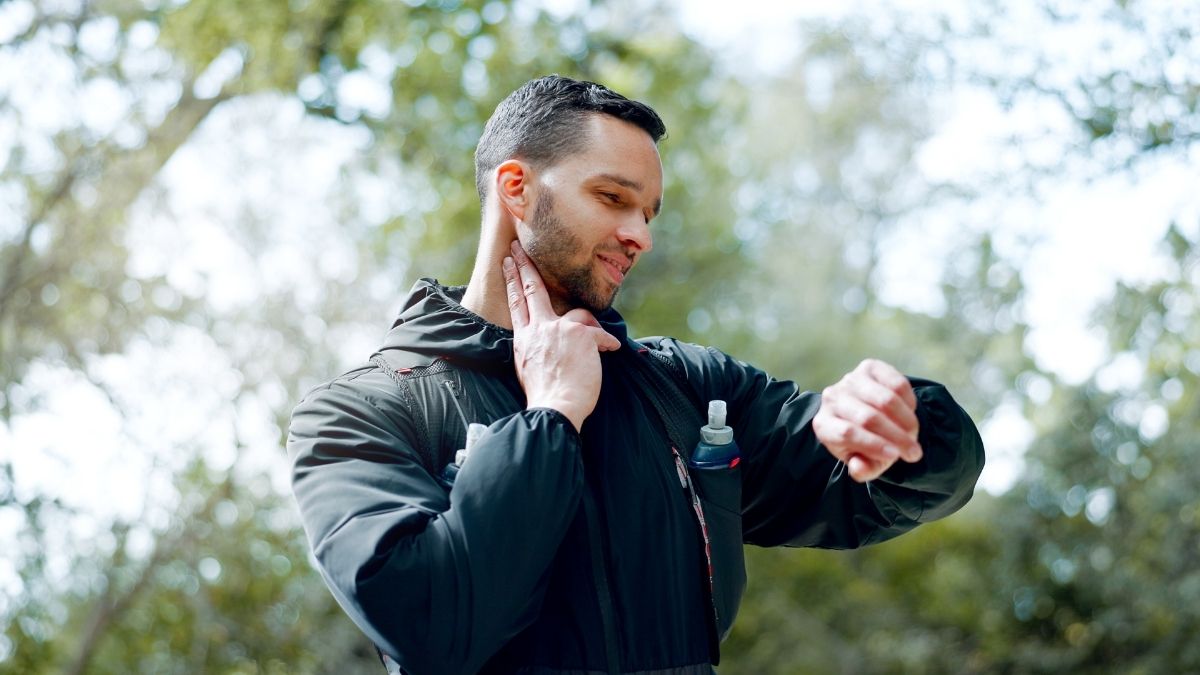You don’t need an hour at the gym or expensive equipment to transform your health—just 10 minutes and a pair of shoes.
You’ve heard it all before. Wake up at 5am for CrossFit. Run marathons. Do high-intensity interval training. You tried those plans. They lasted a week. Maybe two. Then life got busy and you quit. Now you feel like exercise just isn’t for you.
Here’s the truth: the 10 minute walk benefits are bigger than most people realize. Scientists have proven that short walks improve your heart health, boost your mood, help you sleep better, and reduce your risk of serious disease. You don’t need more time. You just need consistency.
This guide shows you exactly what happens in your body during a 10-minute walk. You’ll learn how to build a daily walking routine that actually sticks. No complicated tracking. No special gear. No guilt when you’re not perfect.
Ten minutes is the magic number for beginners because it’s short enough that you can’t talk yourself out of it. But it’s long enough to create real change in your body. Small efforts do matter. In fact, they matter more than big efforts you can’t maintain.
— Stanford University Study
7 Science-Backed Benefits of Your Daily 10-Minute Walk

You know that feeling when you’ve been staring at a screen too long? Your neck hurts. Your brain feels foggy. You can’t think straight. Here’s the fix: put on your shoes and walk for 10 minutes. That’s it.
Immediate Mood Boost and Mental Clarity
Your brain starts releasing endorphins within 5 to 7 minutes of walking. These are your body’s natural happy chemicals. At the same time, walking cuts down cortisol (your stress hormone) by up to 15%.
The University of Michigan found that people who took nature walks had better mental health than those who didn’t. Here’s what matters: walking beats scrolling through your phone when you need stress relief.
Your body was built to move, not sit. When you walk, even for just 10 minutes, your mind clears. Problems that seemed huge suddenly feel manageable. And you didn’t need an app or a pill to make it happen.
Cardiovascular Health Improvements
Ten-minute walks lower your blood pressure by 4 to 5 points. That might not sound like much, but it adds up. Harvard researchers found that regular short walks reduce your risk of heart disease by 20%.
Your blood flows better. Your heart gets stronger. Here’s the good news for beginners: those 10 minutes work almost as well as a 30-minute walk when you’re just starting out. And it’s definitely better than sitting on your couch.
The Journal of the American Heart Association proved that three 10-minute walks throughout your day give you the same health benefits of walking for one 30-minute session. You don’t need to block off a huge chunk of time. Just walk.
Enhanced Creativity and Problem-Solving
Stanford University discovered something amazing. People who walked showed a 60% boost in creative thinking. That’s more than half. Walking helps “unstick” your brain when you’re facing a tough problem.
Silicon Valley executives figured this out years ago. They hold walking meetings instead of sitting in conference rooms. Why does this work? Walking creates what scientists call a “mild distraction” effect.
Your conscious mind focuses on putting one foot in front of the other. Meanwhile, your subconscious works on solving your problem. You’re not trying too hard. That’s when the best ideas show up.
Better Blood Sugar Control
Walk for 10 minutes after you eat lunch or dinner. Your blood sugar spikes drop by 12%. This matters if you’re worried about diabetes. It matters if you feel tired after meals.
Your muscles use up the sugar in your blood when you move. You don’t need a gym membership. You don’t need equipment.
You just need to time your walks right. Post-meal walks are one of the simplest ways to prevent diabetes through what doctors call “micro-movement.” Small actions. Big results.
Improved Sleep Quality
Morning walks help reset your body’s internal clock. Evening walks help you wind down after a stressful day. One study found that people who took 10-minute walks fell asleep 12 minutes faster than people who didn’t walk.
For some people, this works better than taking melatonin supplements. Your body learns when it’s time to be awake and when it’s time to sleep.
Walking teaches your body this rhythm. Natural light during your morning walk makes this effect even stronger.
Gradual Weight Management
Each 10-minute walk burns 30 to 50 calories. That doesn’t sound like much. But here’s the math: burn 3,500 extra calories per week and you’ll lose about one pound per month.
That’s 12 pounds in a year without changing what you eat. Walking also helps control your appetite. Your body learns to crave movement instead of snacks.
And here’s the best part: short walks often lead to longer walks. You build the habit first. The results follow.
Stronger Bones and Joints
Walking is weight-bearing exercise without the joint stress of running. Your bones stay dense as you age. Your joints get lubricated with movement.
People with arthritis often feel less pain after regular walks. If you’re over 50, this is safer than running. Studies show even 10 minutes of walking reduces your overall mortality risk by 15%.
That means you’re less likely to die from any cause. Walking keeps your body working the way it should.
The health benefits of walking don’t require hours at the gym. These 10 minute walk benefits start immediately.
Short walks health improvements compound over time. Ten minutes today. Ten minutes tomorrow. Before you know it, moving becomes normal instead of optional.
How to Make Your 10-Minute Walk a Daily Habit

You’ve tried to start a daily walking routine before. You lasted three days. Maybe a week. Then life got busy and you stopped. Here’s how to make it stick this time.
Attach Your Walk to Something You Already Do
This is called habit stacking. You link your new habit to an old one. Walk immediately after pouring your morning coffee, before taking the first sip. Or walk right after lunch. Or after dinner.
Pick something you do every single day without thinking. Then add your walk right after it. Your brain already has a trigger for the old habit. Now that same trigger starts your walk.
Make It Easier to Start Than to Skip
Put your walking shoes by the door. Set out your jacket the night before. Remove every obstacle between you and stepping outside.
The easier you make it, the more likely you’ll do it. Set a phone alarm for 2pm with the label: “Step outside.” When it goes off, you just move. No decisions. No excuses.
Use the Two-Minute Rule
Tell yourself you only need to put on shoes and step outside. That’s it. Two minutes. Once you’re outside, you’ll almost always take the full walk.
But if you don’t, that’s okay. You still win because you kept the habit alive. A two-minute walk beats zero minutes every time.
Track Your Streak Simply
Grab a wall calendar. Put an X on every day you walk 10 minutes a day. Jerry Seinfeld used this method to write jokes daily. He called it “don’t break the chain.” Watch your chain of X marks grow.
You won’t want to break it. Skip the fancy apps with badges and graphs. A simple calendar works better for building a consistent walking habit.
Plan for Bad Weather
Rain happens. Snow happens. Walk inside your local mall before stores open. Do loops around your office parking lot. Walk up and down your hallway if you have to.
The location doesn’t matter. The consistency does. Figure out your weather backup plan today, not when it’s pouring rain tomorrow.
Ten minutes. Every day. No matter what. That’s your daily walking routine now.
Common Mistakes People Make (And How to Avoid Them)

Most people fail at walking before they even start. Here’s why.
You’re Planning Too Much
Sarah decided she’d walk 45 minutes every morning. She managed three days. Then she quit. Later, she tried just 10 minutes.
She hasn’t missed a day in four months. Start small. Really small. You can always add more later. But if you start too big, you’ll burn out fast.
You’re Making It Too Complicated
You don’t need special shoes. You don’t need the perfect route. You don’t need to find the ideal time of day. Just walk. Out your door.
Around the block. Right now. People spend weeks planning instead of walking. Planning feels productive. But it’s just another way to avoid starting.
You Think One Missed Day Ruins Everything
You missed yesterday. So what? Walk today. Walking consistency isn’t about perfection. It’s about coming back after you mess up.
Missing one day is normal. Quitting because you missed one day is a choice. Choose to start again instead.
You Want Results Too Fast
Nothing dramatic happens in week one. Or week two. That’s normal. Short daily walks work through compound effect. Ten minutes today seems small.
But that’s 70 minutes this week. Three hundred minutes this month. Sixty hours this year. Those hours add up in your body even when you can’t see it happening.
You’re Dismissing Your Effort
Ten minutes feels like nothing. You tell yourself it doesn’t count. That’s wrong. Every single 10-minute walk counts. Your heart doesn’t know you “only” walked 10 minutes.
It just knows you moved. Your brain doesn’t know you wanted to walk longer. It just got the mood boost it needed. Stop waiting for walks to feel impressive. Start celebrating that you did it at all.
When to Expect Results (A Realistic Timeline)

You want to know when walking 10 minutes a day results start showing up. Here’s what happens and when.
Days 1-7: You Feel Different
Your mood gets better first. Most people notice this within three days. You sleep better at night. You feel less stressed during the day.
These daily walking benefits show up fast because your brain responds quickly to movement. Don’t expect to see physical changes yet. But you’ll feel them.
Weeks 2-4: It Gets Easier
Your energy levels go up. Walking stops feeling like a chore. By week three, you’ll probably forget to think about it. You just walk.
Your body starts expecting the movement. Some days you’ll actually want to walk. That’s when you know the habit stuck.
Months 2-3: Your Body Changes
Now the measurable stuff happens. Your blood pressure drops. Your resting heart rate gets lower. You might lose a few pounds. Your clothes might fit differently.
Most people naturally extend their walks to 15 or 20 minutes by month three. Not because they force it. Because 10 minutes starts feeling too short.
Month 6 and Beyond: Walking Becomes Who You Are
You stop counting. You just walk. Some days it’s 10 minutes. Some days it’s 30. You don’t care about tracking anymore.
Your body craves the movement. People who don’t walk seem weird to you now. You’ve become a person who walks. That’s the biggest result of all.
CONCLUSION
The 10 minute walk benefits are real and backed by science. You’ll feel better mentally within your first week. Your heart disease risk drops by 20% over time. You’ll sleep better at night. And here’s what makes it work: ten minutes is so short you can’t talk yourself out of it.
Scientists know that small, consistent habits beat big ambitious plans every single time. You don’t need to fix your entire life. You just need to walk for 10 minutes.
Tomorrow morning, before you check your phone, step outside for 10 minutes. Don’t track it. Don’t optimize it. Just walk. Notice how you feel when you return. That feeling is your body thanking you for the simplest investment you can make in your health.


